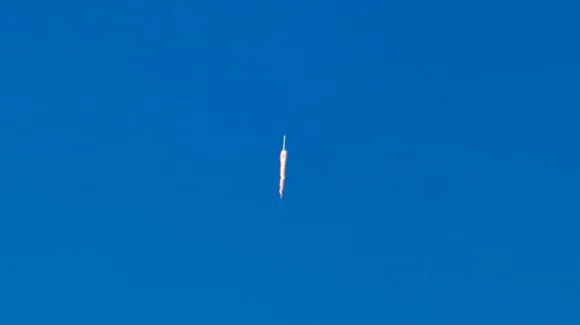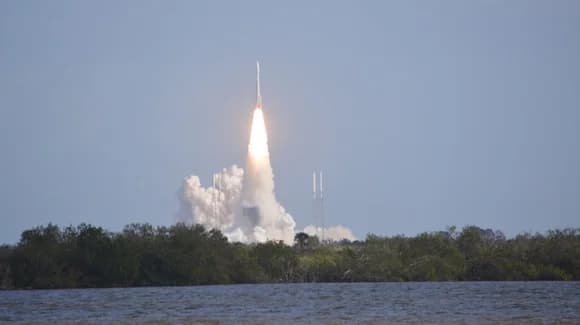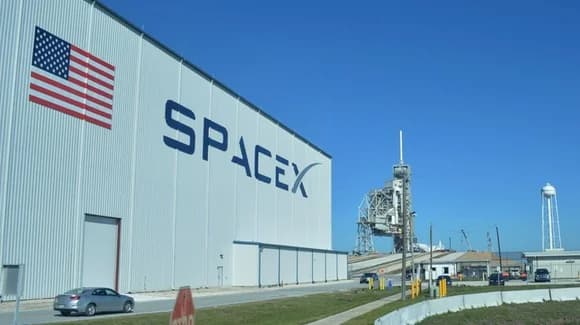Rocket Launch Schedule 2019

If you ever get the opportunity to watch the launch of a rocket then you do not want to miss it; it is an experience of a lifetime. Words cannot describe the sounds of a rocket blasting off from the Kennedy Space Center.
Complete 2019 Florida Rocket Launch Schedule
This page details the historical launches in 2019. Click here for previous launch details for 2018 and launch details for 2020.
There were a total of 16 launches from the Kennedy Space Center and Cape Canaveral Air Force Station in 2019, more than any other spaceport in the world.
All times are local times.
Abbreviations:
- EDT — Eastern Daylight Time
- EST — Eastern Standard Time (during the winter months)
2019 Florida Rocket Launch Highlights
2019 saw the first launch of the long delayed SpaceX Crew Dragon (also known as Dragon 2) to support missions to the International Space Station and Boeing with their CST-100 Starliner crew capsule.
The commissioning of these two systems will see the beginning of the end of US reliance on Russian Soyuz spacecraft to rotate crews to the International Space Station.
Both SpaceX and NASA planned to carry out in-flight abort tests in 2019 on unmanned version of the Crew Dragon and Orion capsule, respectively. Boeing successfully launched their test flight in July but SpaceX suffered an explosion in a pre-launch test which has set their programme back.
SpaceX also hoped to launch more Falcon Heavy missions in 2019 following the successful first launch in 2018. It had been planned that their autonomous spaceport drone ship (ASDS) “Of Course I Still Love You” would be joined in mid 2019 by a new second drone ship to be called “A Shortfall Of Gravitas”. In the end they transited their west coast drone ship “Just Read The Instructions” to the east coast in December.
This gives SpaceX the potential to recover two Falcon 9 boosters on land and two at sea.
The new Block 5 Falcon 9s are proving very reliable and several of their boosters have now been launched three times each and one has even managed four launches by the end of 2019.
SpaceX’s fairing catching support vessel “Mr Steven” that had been trialling in California for some months in 2018 and had transitioned to the east coast in January 2019 started supporting launches from Kennedy.
Mr Steven is being used to capture the two fairing halves, that enclose the payload during launch, to enable them to be reused further reducing launch costs.
In February it suffered damage to its arms and nets during a trip out to make a recovery attempt and was in dock until late May having modified arms and nets fitted. In the meantime SpaceX has developed GPS-guided parafoils to better control the fairing halves during the descent.
Renamed “Ms. Tree”, it had its first successful capture in June 24 when it caught one half of the payload fairing from the Falcon Heavy STP-2 mission. A second vessel named “Ms. Chief” is now also based at Port Canaveral.
February 22, 2019 - SpaceX Falcon 9 - PSN-6 & SpaceIL Lunar Lander
A SpaceX Falcon 9 rocket launched the PSN-6 satellite for Pasifik Satelit Nusantara.
This launch also included two “piggyback” rideshare payloads; the S5 space surveillance satellite for the U.S. Air Force and the SpaceIL Sparrow moon lander “Beresheet” (Hebrew for Genesis).
Launch was at 8:45 p.m. EST from launchpad SLC-40.
Delayed from January and February 13 and 18, 2019.
The first stage booster (B1048) was successfully recovered after landing on the autonomous spaceport drone ship (ASDS) “Of Course I Still Love You”. This was the third successful flight for this booster after two launches from Vandenberg Air Force Base in California last year.
It is likely this same booster will be used one final time for the Crew Dragon’s in-flight abort (IFA) test.
The Sparrow moon lander went on to successfully orbit the moon but a technical fault resulted in it crash landing on the surface of the moon as it attempted to land on April 11.
March 2, 2019 - SpaceX Falcon - Crew Dragon DM-1 Demonstration Mission 1
The SpaceX Falcon rocket launched the first unmanned Crew Dragon (Dragon 2) capsule to the International Space Station (ISS).
Launch window was 2:48 a.m. EST from launch pad LC-39A.
The first stage booster rocket landed on the autonomous spaceport drone ship (ASDS) “Of Course I Still Love You”.
The Dragon 2 made a successful rendezvous and docking with the ISS. After five days it returned to Earth with a splashdown in the Atlantic Ocean off the coast of Florida on Friday, April 8.
The capsule was subsequently destroyed during a ground test on April 20 as a result of a propellant leak which will has set the manned Crew Dragon programme back several months.
Delayed from December 2016, May, July, August and November 2017, February, April, August, November and December 2018. Delayed from January 7 and 17, February 9, 16 and 23, 2019.
March 15, 2019 - United Launch Alliance Delta IV Rocket, WGS-10
The Delta IV rocket launched the tenth Wideband Global SATCOM spacecraft (Wideband Gapfiller Satellite) for the U.S. military.
Launch was from launch pad SLC-37B at 8:26 p.m. EDT.
Delayed from November 1 and 16 and December 13, 2018. Delayed from January 23 and 25, March 13, 2019.
April 11, 2019 - SpaceX Falcon Heavy - Arabsat-6A
The second ever flight of a SpaceX Falcon Heavy rocket will launch the 13,000 pound (6,000 kg) Arabsat-6A communications satellite for Arabsat of Saudi Arabia.
The Falcon Heavy is currently the world’s most powerful rocket and consists of three Falcon 9 cores joined together with a total of 27 Merlin 1D engines.
This is the first ever flight of the Falcon 9 Heavy with Block 5 boosters and the first commercial launch of a Falcon 9 Heavy.
Launch was from launch pad LC-39A with a launch window of 6:35 to 8:32 p.m. EDT.
SpaceX successfully recovered the two side boosters on land with the central core touching down on their autonomous spaceport drone ship (ASDS) “Of Course I Still Love You” moored 600 miles out in the Atlantic. Unfortunately heavy seas caused the central core to topple off the barge.
Both side boosters are earmarked for a future mission Falcon Heavy mission, the U.S. Air Force Test Program 2.
Even though both payload fairings landed in the ocean, they were successfully recovered and reused on the Starlink 1 launch.
Delayed from Quarter 1, 2 and 4, 2018 March and April 7, 9 and 10, 2019.
May 4, 2019 - SpaceX Falcon 9, CRS 17
The SpaceX Falcon 9 rocket launched the 19th Dragon spacecraft. The purpose of the mission is to take the 17th resupply cargo load to the International Space Station.
Launch was from launch pad SLC-40 with a launch time of 2:48 a.m. EDT.
SpaceX were unable to recover the booster on their landing zones at Cape Canaveral as they were still working on the site following the accident with the Crew Dragon capsule that exploded on April 20 and so it was recovered to the autonomous spaceport drone ship (ASDS) “Of Course I Still Love You” moored 14 miles out in the Atlantic.
SpaceX hope to use the same first stage booster for the next two resupply missions CRS-18 in July and CRS-19 in December.
Delayed from November 16, 2018, February 1 and 17, March 16, April 25 and 30 and May 1 and 3, 2019.
May 23, 2019 - SpaceX Falcon 9, Starlink 1
A SpaceX Falcon 9 rocket launched a test batch of 60 development Starlink v0.9 satellites as part of SpaceX’s own Starlink broadband network. Each satellite weighs around 500 lb (227 kg).
This was the heaviest Falcon 9 launch to date with a total payload weight of 30,000 lb (13,000 kg).
The first stage booster previously flew on the Telstar 18 Vantage mission in September 2018 and the Iridium 8 mission in January 2019. It landed successfully on the autonomous spaceport drone ship (ASDS) “Of Course I Still Love You” moored out in the Atlantic.
Launch was from launch pad SLC-40. The 90 minute launch window opened at 10:30 p.m. EDT.
Delayed from May 15 and 16, 2019.
June 24, 2019 - SpaceX Falcon Heavy - STP-2
The SpaceX Falcon Heavy rocket launched a group of 24 military and scientific research satellites as part of the U.S. Air Force Test Program 2. It was SpaceX’s most challenging mission yet with four separate second stage burns, three deployment orbits with a mission length of over six hours.
Amongst the payload was a tiny 5kg LightSail 2 cubesat which will test the ability to raise its orbit using light from the Sun, various NASA and NOAA satellites and an Air Force Research Laboratory.
Launch was from launch pad LC-39A with a four hour launch window starting at 11:30 p.m. EDT. Launch actually took place at 2:30 a.m. EDT on June 25.
The mission used a new central core Falcon 9 first stage booster and two flight-proven side boosters from the earlier Falcon Heavy Arabsat-6A mission in April.
Both side boosters were successfully recovered again, landing back at the Cape Canaveral Air Station.
Unfortunately the central core failed to land on the ASDS “Of Course I Still Love You”. It is believed the core was damaged during re-entry. The ASDS had been moved to around 770 miles off the coast of Florida; the furthest SpaceX had ever attempted a recovery.
However, SpaceX did also manage to recover one of the two payload fairings for the very first time using their net catcher support vessel “Ms. Tree”.
Delayed from October 2016, March and September 2017, April 30, June 13, October 30 and November 30, 2018, April and June 22, 2019.
July 2, 2019 - Orion Ascent Abort-2 (AA-2) Test
As part of the Space Launch System (SLS) Artemis programme, NASA has tested an in-flight abort of an unmanned Orion capsule.
The capsule was launched by an Orbital ATK solid rocket booster (a modified Peacekeeper missile) and at an altitude of around 6 miles, the launch abort system was successfully triggered safely separating the crew capsule from the rocket.
Launch was from launch pad SLC-46 with a four hour launch window which started at 7:00 a.m. EDT.
Delayed from April and June 12, 2019.
July 25, 2019 - SpaceX Falcon 9, CRS 18
The SpaceX Falcon 9 rocket launched the 20th Dragon spacecraft. The purpose of the mission was to take the 18th resupply cargo load to the International Space Station including the third International Docking Adapter (IDA-3).
Both the first stage booster and the Dragon capsule have launched before. In fact this will be the capsules third flight.
Launch was from launch pad SLC-40 with a launch time of 6:01 p.m. EDT.
Delayed from May 7, July 8, 18, 21 and 24, 2019.
August 6, 2019 - SpaceX Falcon 9, Amos 17
A flight-proven SpaceX Falcon 9 rocket launched the Amos 17 communications satellite for Spacecom of Israel.
This mission was a replacement launch for Spacecom. On September 1, 2016, the ill fated Amos 6 satellite was destroyed when a Falcon 9 rocket exploded on the pad just before commencement of a static-fire test.
Launch was from launch pad SLC-40 with a launch window from 6:52 to 8:20 p.m. EDT.
SpaceX used a previously twice flown Block 5 Falcon 9 first stage but did not attempt to recover it. This was most likely to ensure that the satellite safely reached orbit in the quickest possible time.
Their offshore recovery vessel “Ms Tree” successfully captured one of the two fairing halves.
Delayed from May 27, June, July 24, August 3 and 5, 2019.
August 8, 2019 - United Launch Alliance Atlas V Rocket, AEHF-5
The United Launch Alliance Atlas V rocket has launched the 5th Advanced Extremely High Frequency (AEHF) satellite for the U.S. Air Force Space and Missile Systems Center.
This was the 80th launch of an Atlas V rocket since 2002.
Launch was from launch pad SLC-41 with a two hour launch window starting at 5:44 a.m. EDT. Liftoff occurred at 6:13 a.m.
Moved forward from July. Delayed from June 27 and July 17, 2019.
August 22, 2019 - United Launch Alliance Delta IV Rocket, GPS 3 SV02
The Delta IV rocket launched the 2nd third-generation GPS satellite for the U.S. Air Force. This launch was originally scheduled with a SpaceX Falcon 9 rocket.
This was the last ever launch of a Delta IV Medium rocket with a single first stage. The Delta IV Heavy (with three boosters) will continue in service until at least 2024, ultimately being replaced by the Vulcan Centaur.
Launch was from launch pad SLC-37B at 9:06 a.m. EDT (launch window was from 9:00 to 9:27 a.m. EDT).
Delayed from November 1 and December 13, 2018, April 4 and July 25, 2019.
October 10, 2019 - Pegasus XL - ICON
A Lockheed L-1011 TriStar “Stargazer” air launched the Pegasus XL rocket (built by Orbital ATK, now Northrop Grumman) to deploy NASA’s Ionospheric Connection Explorer (ICON) satellite to study the ionosphere.
Last Pegasus XL launch was in December 2016 and this launch was switched from Kwajalein Atoll in the Marshall Islands to Cape Canaveral Air Force Station in 2018.
Launch time was 9:59 p.m. EDT and the L-1011 launched from an altitude of around 39,000 feet some 100 miles east of Daytona Beach.
Delayed from June 15, November 14 and December 8, 2017, June 14, September 24, October 6, October 26, November 3 and November 7, 2018, Quarter 1 and 2 and October 9, 2019.
November 11, 2019 - SpaceX Falcon 9, Starlink 1
A SpaceX Falcon 9 rocket launch the 1st batch of 60 upgraded Starlink v1.0 satellites as part of SpaceX’s own Starlink broadband network. Each satellite weighs around 500 lb (227 kg).
Launch was from launch pad SLC-40 at 9:56 EST.
Not only did SpaceX use a booster that had already flown three times before they also reused both payload fairing halves that had previously flown on the Arabsat 6A Falcon Heavy launch in April.
Delayed from October 17, 2019.
December 5, 2019 - SpaceX Falcon 9, CRS 19
The SpaceX Falcon 9 rocket launched the 21st Dragon spacecraft. The purpose of the mission is to take the 19th resupply cargo load to the International Space Station including three CubeSats; CIRiS (Compact Infrared Radiometer in Space), PTD 1 (Pathfinder Technology Demonstrator) and EdgeCube.
The first stage successfully landed on the autonomous spaceport drone ship (ASDS) “Of Course I Still Love You”.
Launch was from launch pad SLC-40 with a launch time of 12:29 p.m. EST.
Delayed from October 15 and December 4, 2019.
December 15, 2019 - SpaceX Falcon 9 - JCSat 18/Kacific 1
A SpaceX Falcon 9 rocket launched the JCSat 18/Kacific 1 satellites for the Sky Perfect JSAT Corporation of Japan and Kacific Ltd. of South Korea.
Launch was from launch pad SLC-40 with a launch window from 7:10 to 8:38 p.m. EST.
The twice flown first stage booster was successfully recovered to the autonomous spaceport drone ship (ASDS) “Of Course I Still Love You”.
Both fairing recovery vessels were deployed and both came close to catching the two fairing halves. They were subsequently lifted onboard after landing in the ocean.
Delayed from November 11, 2019.
December 20, 2019 - United Launch Alliance Atlas V Rocket, CST-100 Starliner Orbital Flight Test
The United Launch Alliance Atlas V rocket launched the first test flight of an unmanned Boeing CST-100 Starliner crew module to the International Space Station (ISS).
The plan was for the Starliner capsule to dock with the ISS before returning to earth and making a landing on land in the western United States.
However due to an onboard timing error, the burn needed for a rendezvous with the ISS did not occur as planned but Starliner was able to reach a stable orbit. Engineers decided that there was insufficient fuel remaining to allow the Starliner to reach the correct orbit and dock with the ISS.
As a result the mission was cut short and the capsule was in the desert at White Sands Space Harbor in New Mexico two days later.
This is the first time a returning capsule has landed on dry land rather than in the water. On its return to earth the capsule was christened “Calypso” and will be refurbished for a future mission.
Launch was from launch pad SLC-41 at 6:36 a.m. EST.
Delayed from June, August 27 and late 2018. Delayed from January, March, April, August 17, September, December 17 and 19, 2019.
Sources
- Kennedy Space Center
- Space Flight Now
- Aviation Week and Space Technology
- SpaceX
- United Launch Alliance
- Wikipedia
See also:- NASA tours | NASA tickets



